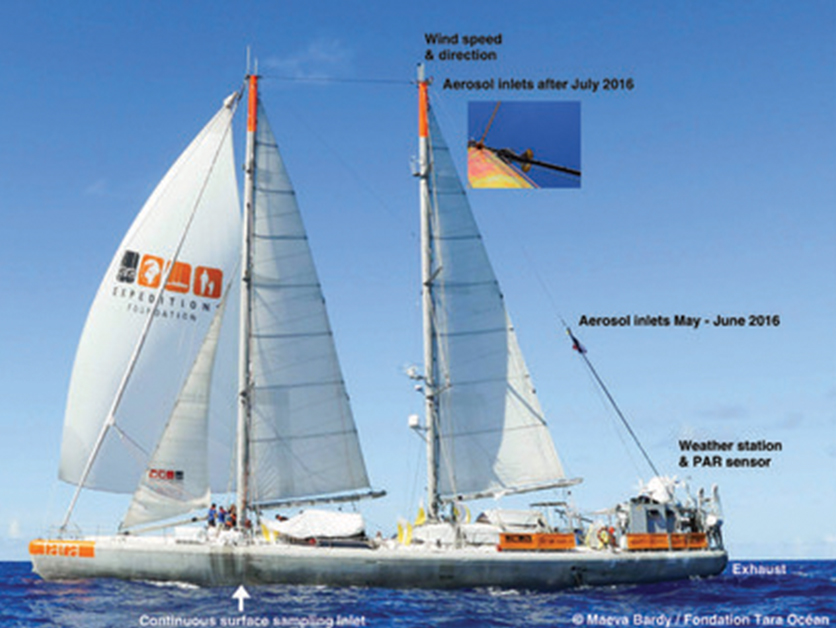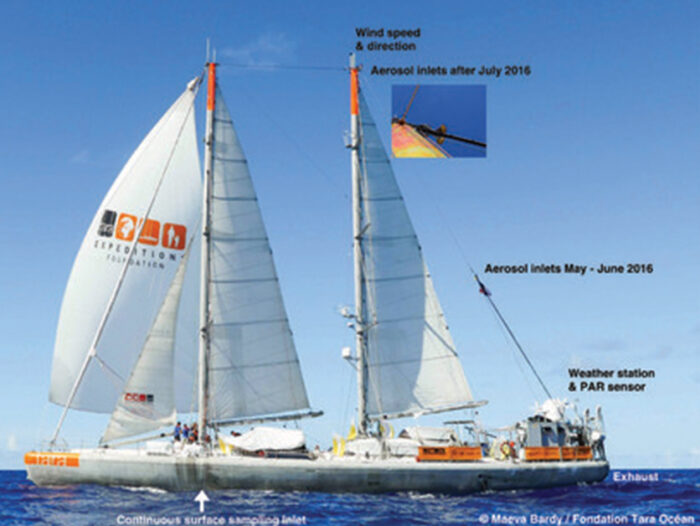
December 27, 2020
As the plastic in our oceans breaks up into smaller and smaller bits without breaking down chemically, the resulting microplastics are becoming a serious ecological problem.
Now, a new study at the Weizmann Institute of Science and published in Nature reveals a troubling aspect of microplastics – defined as particles smaller than 5 mm across and spreading hazardous pollution.
These particles are being swept up into the atmosphere and carried on the wind to far-flung parts of the ocean, including those that appear to be clear. Analysis reveals that such minuscule fragments can stay airborne for hours or days, spreading the potential to harm the marine environment and, by climbing up the food chain, to affect human health.
“A handful of studies have found microplastics in the atmosphere right above the water near shorelines,” said Dr Miri Trainic, in the groups of Professor Ilan Koren of the Institute’s Earth and Planetary Sciences Department in collaboration with that of Professor Yinon Rudich of the same department, and Professor Assaf Vardi of the Institute’s Plant and Environmental Sciences Department.
“But we were surprised to find a non-trivial amount above seemingly pristine water,” said Dr Trainic.
Koren and Vardi have been collaborating for a number of years on studies designed to understand the interface between ocean and air. While the way the oceans absorb materials from the atmosphere has been well studied, the opposite-direction’s process – aerosolisation, in which volatiles, viruses, algal fragments and other particles are swept from seawater into the atmosphere – had been much less investigated.
As part of this ongoing effort, aerosol samples were collected for study in the Weizmann labs during the 2016 run of the Tara research vessel, a schooner on which several international research teams at a time come together to study the effects of climate change, primarily on marine biodiversity. The Weizmann team affixed the inlet of their measuring equipment to the top of one of the Tara’s masts (so as to avoid any aerosols produced by the schooner, itself) and Dr J. Michel Flores, of Koren’s group, joined the mission to tend to the collecting as the schooner sailed across the North Atlantic Ocean.
Identifying and quantifying the microplastic bits trapped in their aerosol samples was far from easy, as the particles turned out to be hard to pick out under the microscope. To understand exactly what plastic was getting into the atmosphere, the team conducted Raman spectroscopy measurements with the help of Dr Iddo Pinkas of the Institute’s Chemical Research Support to determine their chemical makeup and size.
The researchers detected high levels of common plastics – polystyrene, polyethylene, polypropylene and more – in their samples. Then, calculating the shape and mass of the microplastic particles, along with the average wind directions and speeds over the oceans, the team showed that the source of these microplastics was most likely the plastic bags and other plastic waste that had been discarded near the shore and made its way into the ocean hundreds of kilometres away.
Checking the seawater beneath the sample sites showed the same type of plastic as in the aerosol, providing support for the idea that microplastics enter the atmosphere through bubbles on the ocean surface or are picked up by winds, and are transported on air currents to remote parts of the ocean.
“Once microplastics are in the atmosphere, they dry out, and they are exposed to UV light and atmospheric components with which they interact chemically,” said Trainic.
“That means the particles that fall back into the ocean are likely to be even more harmful or toxic than before to any marine life that ingests them.”
Vardi added that in addition some of these plastics become scaffolds for bacterial growth for all kinds of marine bacteria.
“Airborne plastic could be offering a free ride to some species, including pathogenic bacteria that are harmful to marine life and humans,” he said.
“The real amount of microplastic in the ocean aerosols is almost certainly greater than what our measurements showed, because our setup was unable to detect those particles below a few micrometers in size,” said Trainic.
“For example, in addition to plastics that break down into even smaller pieces, there are the nanoparticles that are added to cosmetics and which are easily washed into the ocean, or are formed in the ocean through microplastic fragmentation.”
Size, in the case of plastic particles, does matter, not only because lighter ones may stay airborne for longer periods. When they do land on the water’s surface, they are more likely to be eaten by equally small marine life, which, of course, cannot digest them. Thus, every one of these particles has the potential to harm a marine organism or to work its way up the food chain and into our bodies.
“Last, but not least, like all aerosols, microplastics become part of the large planetary cycles – for example, carbon and oxygen – as they interact with other parts of the atmosphere,” said Koren.
“Because they are both lightweight and long-lived, we will be seeing more microplastics transported in the air as the plastics that are already polluting our oceans break up – even if we do not add any further plastics to our waterways,” he added.

The research setup included an intake at the top of the mast. The Tara research schooner, 2016. The Bulletin of the American Meteorological Society






